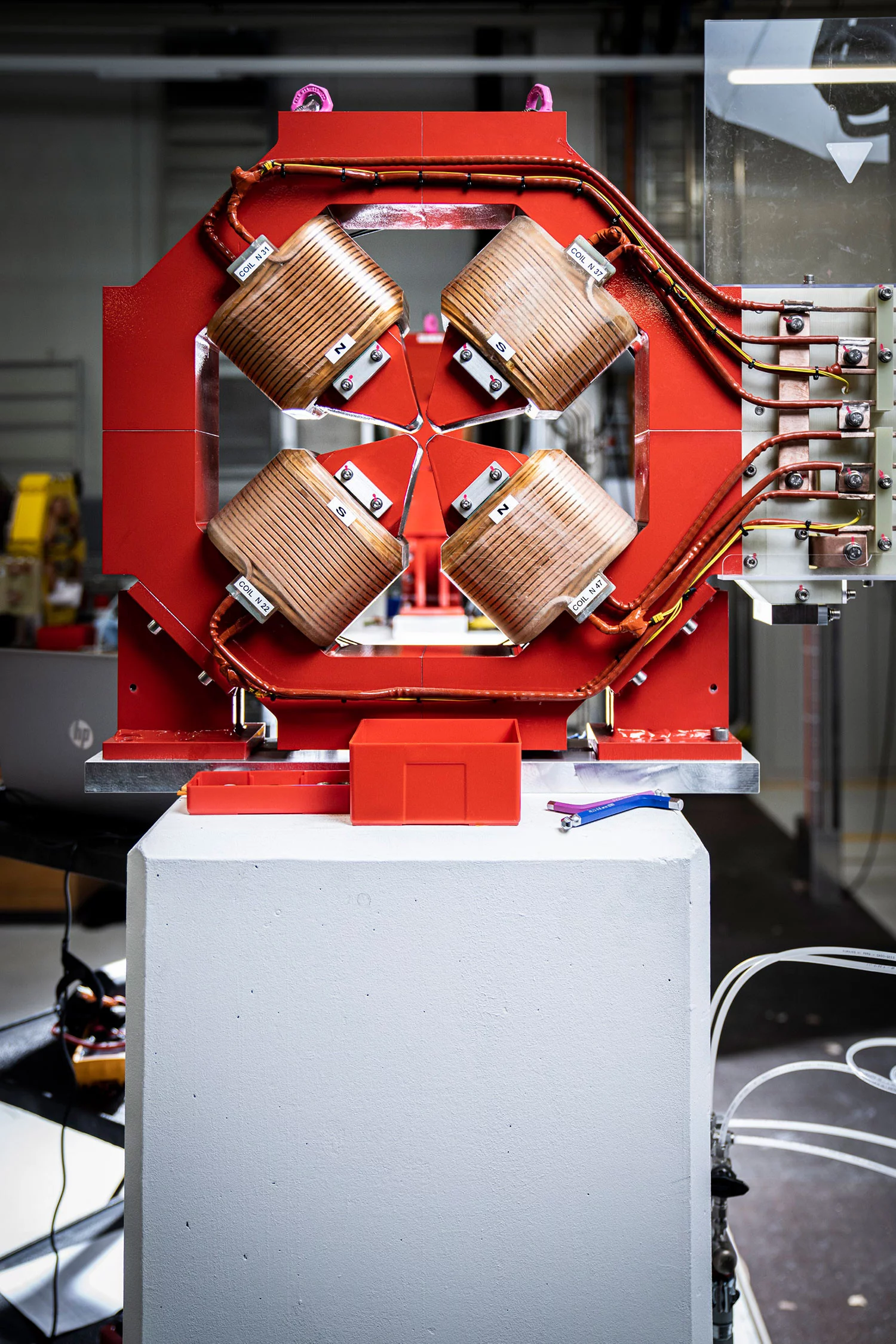Under the name SLS 2.0, the multi-year project to upgrade the Swiss Light Source SLS is currently under way. From 2025 on, the large research facility SLS will provide research with even more intense X-ray light than before. The first special magnets, which are crucial for achieving this, have now arrived. In addition, the Canton of Aargau has released 9.75 million Swiss francs for the budget.
Measurements are still being carried out at the Swiss Light Source SLS; however, preparations for the renovation have been progressing in the background for a long time. The so-called dark time is not scheduled to begin until the fall of 2023. Then the machines will be shut down, and for a good year there will be no X-ray light at the beamlines and their respective experiment stations, while SLS's electron storage ring and other parts are being rebuilt and renewed.
Central to this undertaking is the exchange of the magnet systems. SLS generates X-ray light for research in this way: First electrons are accelerated, and when they have reached 99.999998 percent of the speed of light, special magnets are used to hold them on a circular path in the so-called electron storage ring where, ultimately, they are stimulated to emit X-rays for research. The precision of these magnets is crucial to ensure that the electrons stay exactly on their path in a very narrow beam.
Magnets that keep electrons on course
In total, more than 1,000 new magnets will be installed as part of the electron storage ring upgrade. Around 400 of them are permanent magnets; the remaining 600 or so are different types of electromagnets. All of these magnets were designed and constructed at PSI; the electromagnets are manufactured by an external company. Since April 2022, these have now begun arriving at PSI. Experts in the PSI Magnet Section, led by Stéphane Sanfilippo, are currently measuring the components, and the magnetic field they generate, using state-of-the-art methods.
“We are currently measuring the magnetic field of the first quadrupole electromagnets using the rotating coil method, among other techniques,” Sanfilippo explains. “Each of the approximately one thousand magnets has a unique identification number, for which we are now entering the magnetic properties and other measurement results in a database. In the future, whenever something at SLS 2.0 has to be corrected or optimised, the necessary data for each individual magnet will always be available.”
TOMCAT beamline upgrade secured
Another piece of news shows how the SLS 2.0 project is advancing: The Canton of Aargau announced on 6 May 2022 that it would provide the necessary funds of 9.75 million Swiss francs for the renewal of one of the SLS beamlines, namely TOMCAT, where in recent years top-level research has already been successfully conducted in tomographic microscopy and coherent radiological examinations. The Canton of Aargau and PSI are working together to create a vibrant technology ecosystem that accelerates innovation and stimulates local economic growth.
The financing of the fundamental renovation of the SLS has already been secured by the federal government with 129 million Swiss francs within the framework of the ERI Dispatch for 2021-2024, and this already includes the adaptation of selected beamlines.
Since it first began operating in 2001, SLS has held a position at the top level internationally, and it remains available to guest researchers throughout the world according to the principle of scientific excellence. Research results obtained here have already contributed to various Nobel Prizes. The diverse beamlines of SLS can be used, for example, to investigate the electronic or magnetic properties of materials that could prove useful for the next generation of electronic devices. At other experiment stations, researchers specialise in non-destructive 3D imaging with a resolution of just a few nanometres. Elsewhere researchers are deciphering the structures of proteins, important building blocks of life; precise knowledge of these aids in the development of new medicinal substances and vaccines. The SLS 2.0 upgrade project will increase the quality of the X-ray radiation to 40 times the previous value. That means, in the coming years as before, scientists will be able to do cutting-edge research here.
Text: Paul Scherrer Institute/Laura Hennemann
Further information
Copyright
PSI provides image and/or video material free of charge for media coverage of the content of the above text. Use of this material for other purposes is not permitted. This also includes the transfer of the image and video material into databases as well as sale by third parties.

